Driving Sani Pass is one of those jaw-dropping overlanding experiences. With the right strategies, you can get photographs to match. By Evan Naudé
Ever since Godfrey Edmonds drove up Sani Pass for the first time in 1948, this iconic mountain pass has been at the top of every serious overlander’s bucket list. With only a footpath for guidance, it took Edmonds over five and a half hours (with the help of a team equipped with mules, shovels and ropes!) to summit the pass. His efforts paved the way for the pass eventually being built and today it’ll take you just under an hour to traverse Sani Pass.
Even though Sani is now more accessible than ever before, the pass remains a challenging drive. Reach the top and you are rewarded with a stunning view and a Lesotho stamp in your passport as a keepsake. But how do you begin to convey the exhilarating feeling of conquering Sani to your family and friends back home? Well, it is said that a picture speaks a thousand words. While your seat-clenching adrenaline rush up Sani can’t quite be captured in a photograph, it’s the next best thing.
Here are my top six tips for capturing Sani Pass in the most memorable way.
1. Don’t forget the bottom
The switchbacks at the top of Sani Pass get all the attention, but the valley at the start of the pass is stunning in its own right. Remember to turn your head and look back every now and again to take in the view. Placing a vehicle in your frame gives scale to the landscape and helps the viewer place themselves in the scene.
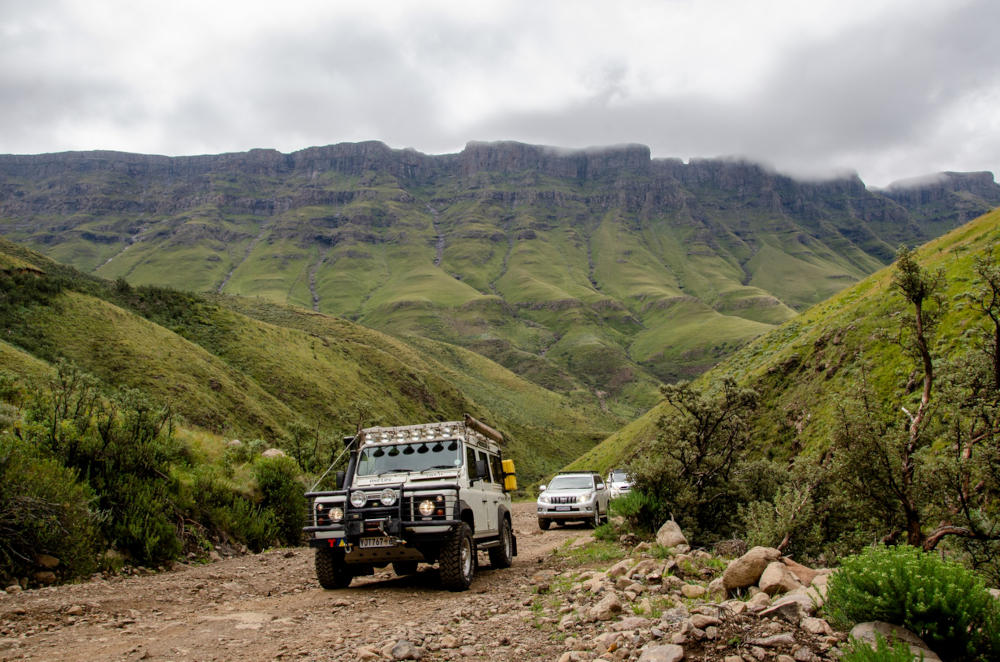
2. See what I see
Another way to help others get a sense of your Sani experience is to focus on something every driver is familiar with, in this case the vehicle’s side view mirror. Most people only see lines of traffic in their side view mirrors, but on Sani your mirror is filled with a long valley flanked by rippling mountains as far as the eye can see.
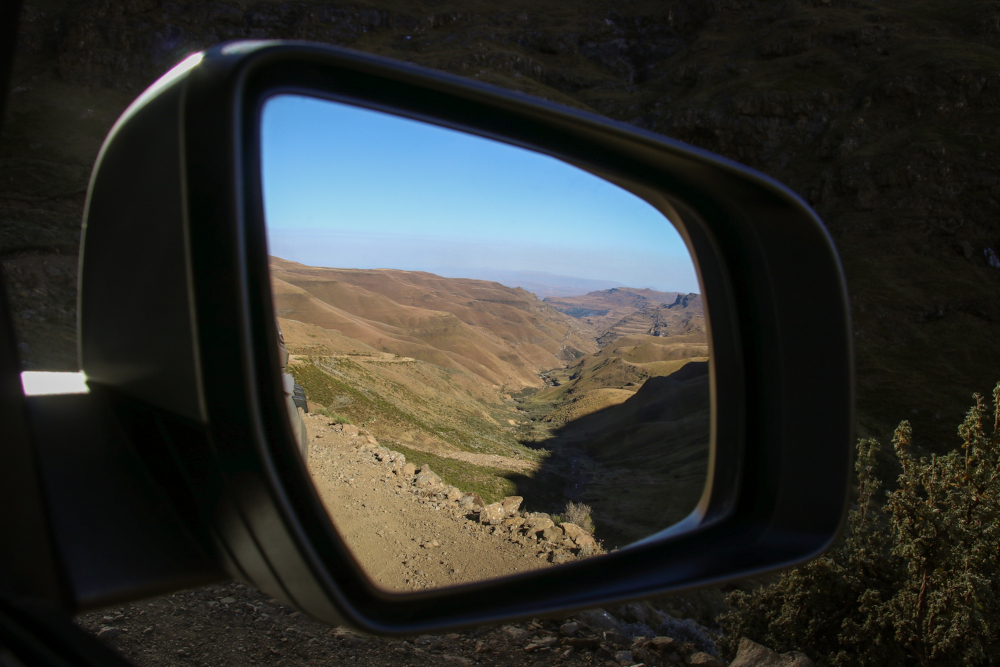
3. Take a portrait of Sani Pass
As you approach the top of Sani the valley gets narrower and the road snakes tighter and tighter up the mountain. Here you might struggle to fit the whole landscape into a landscape orientation, so turn your camera sideways for a portrait photograph. Doing so gives a sense of height to your image, the perfect descriptor for Sani Pass! Alternatively, you could snap a series of portraits and stitch them together in a panorama using imaging software when you get home.
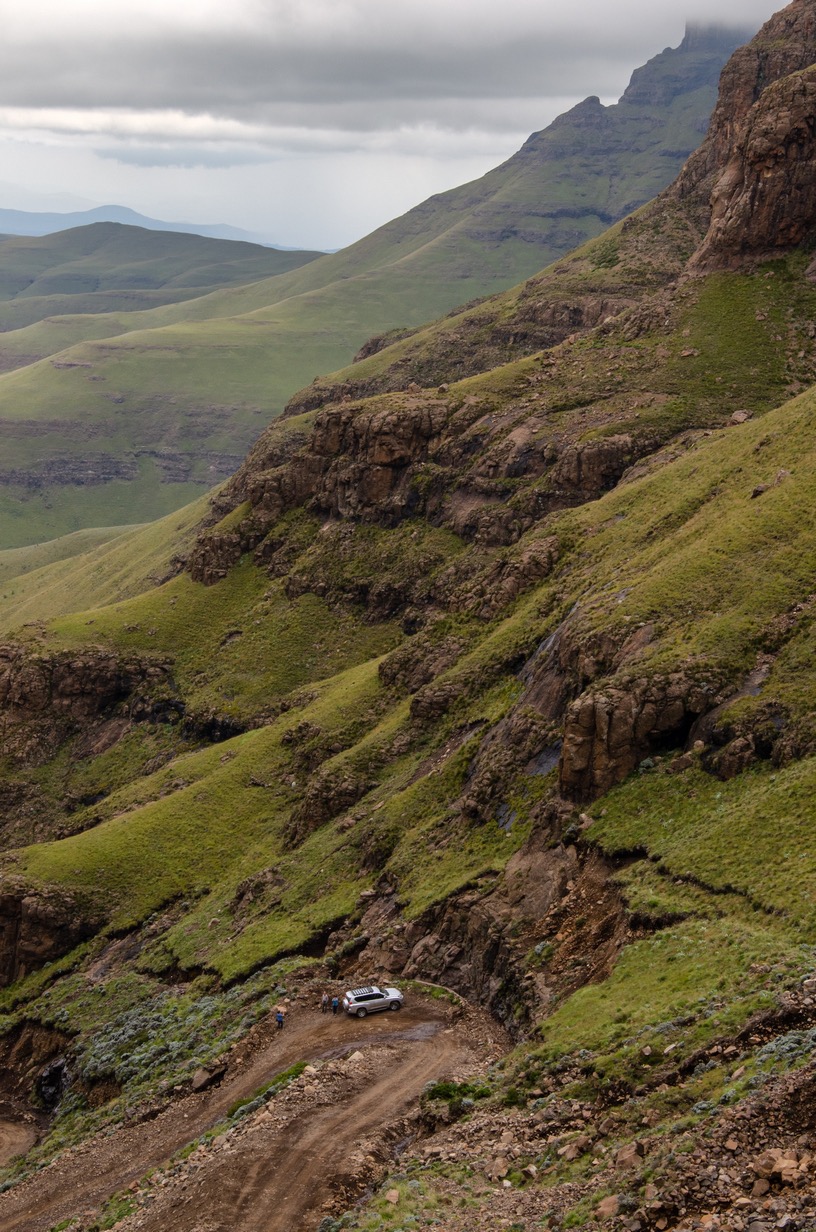
4. Count the corners
The squiggly road at the top of the pass is undoubtedly the highlight of the drive, but capturing Sani’s iconic switchbacks can be challenging. That’s because there isn’t a decent viewpoint along the road that shows them all clearly. For this shot you’ll need to get creative: walk along the northern ridge, directly opposite the Sani Mountain Lodge pub, until you can see the pass snaking beneath you. Frame your shot, wait for a vehicle to drive along for some scale and voila!
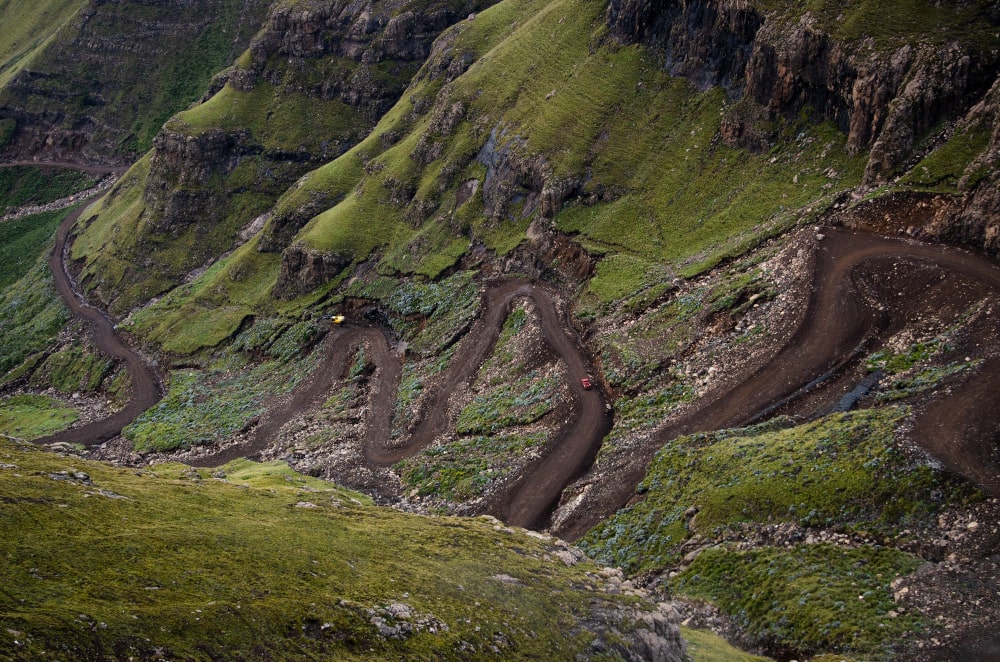
5. The valley below
Between the 6th and 7th switchback (counted from the bottom) you find a view of the road curving back on itself with the sweeping valley in the background. Try to capture the sky, the valley and the road all in one frame. Here the viewer’s eyes follow the road’s zig-zag down the valley, giving a good sense of height and distance.
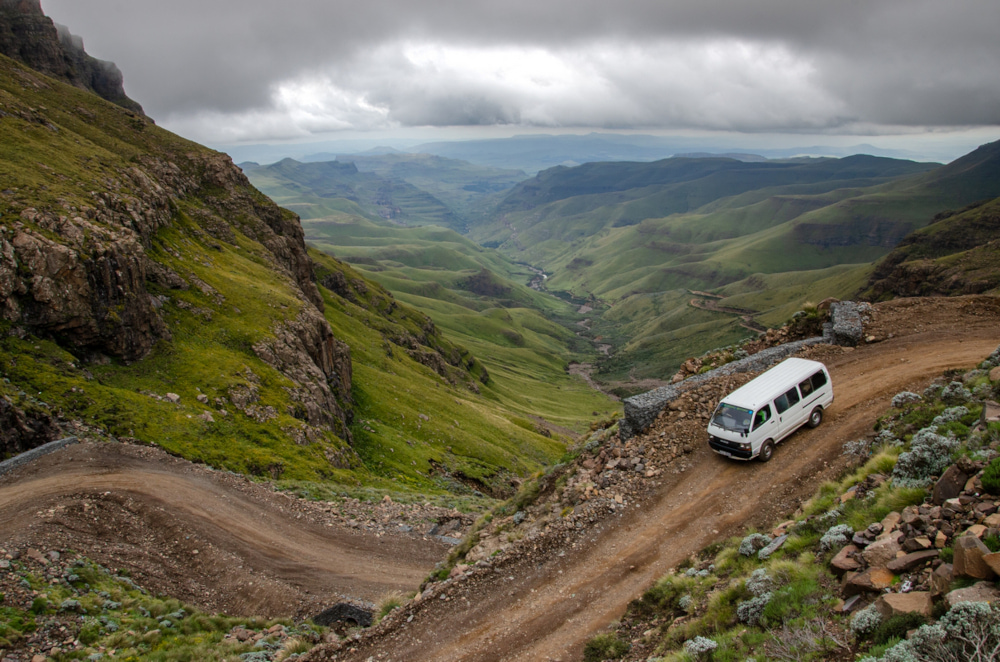
6. Get creative!
Once you’ve reached the top and visited the highest pub in Africa at Sani Mountain Top, take a walk along the cliff edge on the northern side of the valley. Here you’ll find a top-down view of the pass and several nooks and crannies in the rockface through which you can compose some interesting photographs. This shot was taken with the camera between the photographer’s knees, a technique used to illustrate a feeling of vertigo on the cliff edge.
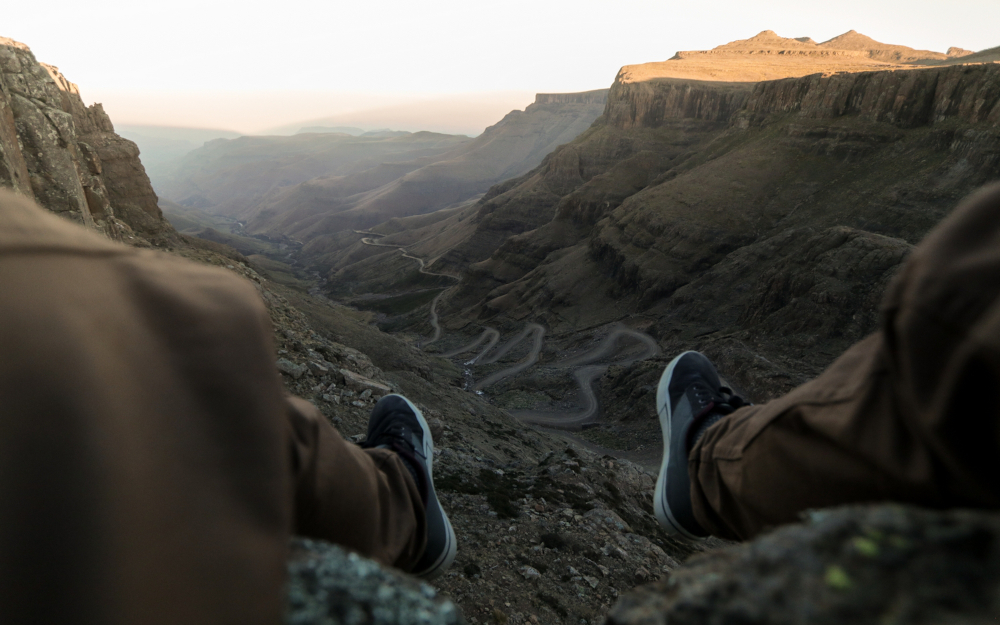
Good to know
Lenses
Bring a wide-angle lens (24mm or wider) to fit the tight switchbacks at the top of the pass in your frame. A zoom lens such as a 70-200mm is handy once you’re at the top and want to isolate subjects in the far distance below you.
Time of day
The high cliffs on either side of Sani keep the pass in the shadow during sunrise and sunset. They also cast shadows over parts of the pass all day long. This means big contrasts between light and dark areas in the photo, which can make finding the correct exposure difficult. You can use this to your advantage, however, because the shadows also provide depth in the landscape. Rainless, cloudy days make for great conditions since there aren’t too many shadows!
Weather
The Drakensberg is lush and green during the summer rainy season (November to April) and dry and brown during the winter months (May to October). While the summer makes for colourful photographs, rainfall makes the pass slippery and more difficult to drive. In winter, occasional snowfall also worsens driving conditions, but will make for the most spectacular photos.
Planning for a snow photo of Sani is very difficult, however, because you need just the right amount of snow for the pass to be driveable and not totally snowed in. Your best bet is to be in the area during predicted snowfall and be ready to head for the pass a day or two after it has stopped snowing.
Viewpoints
It’s worthwhile to get out on the pass itself, especially at the switchbacks, as you progress and keep a lookout for nice views of the road, vehicles and valley below. At the top of the pass, take a walk along the cliff edge directly opposite the Sani Mountain Lodge restaurant for a jaw-dropping view of the winding pass below your feet.
The project of tarring Sani Pass has been underway for several years. However, neither the lodge nor local guides have an indication of when the stretch to the top will be tackled. For now the pass remains untarred: an invitation to overlanders to add this epic experience.
Evan Naudé is a travel photojournalist focused on overlanding, 4×4 and off-the-beaten-track destinations. To see more of his images, follow him on Instagram @evannaude.
Over to you
Have you photographed Sani Pass in all its glory? Send pictures to newsletter@tracks4africa.co.za for a chance to be featured in the Tracks4Africa newsletter.
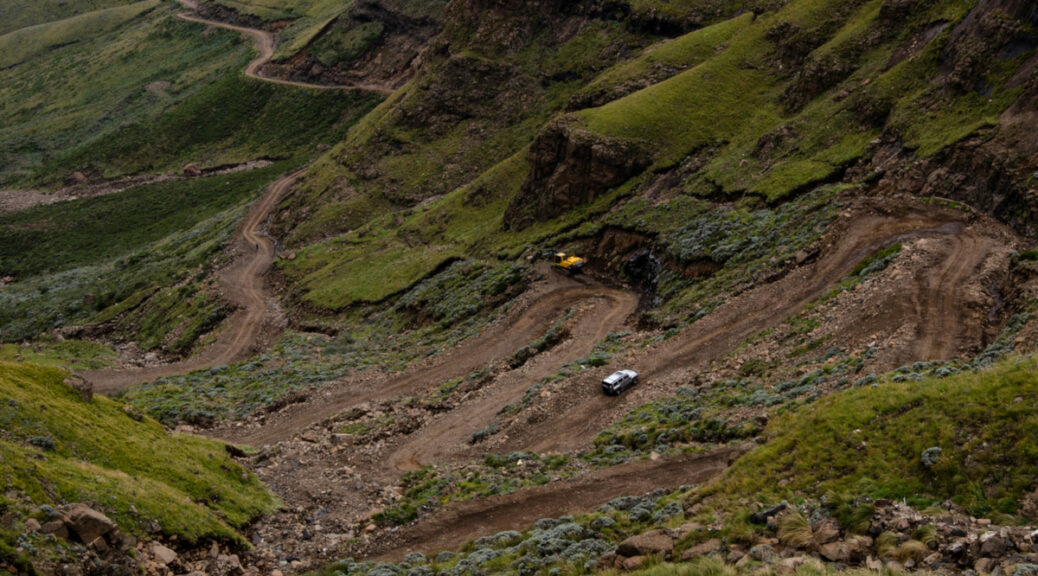

Thanks for this! We will be tacking this pass with some Troopys on the 7th October 2022. Can’t wait. Very helpful bolg and well done to Evan Naudé
Looking forward to seeing pictures from your trip!
Thanks for the info on Sani Pass.
I have an Iveco 4×4 Daily Camper van
High roof.
Are there any over hanging rocks on the pass to worry about?
Thanks
Rolff
The pass is pretty clear, so you shouldn’t have anything to worry about. You can get a clearer picture of what awaits on the videos created by Mountain Passes South Africa: https://www.mountainpassessouthafrica.co.za/find-a-pass/kwazulu-natal/item/410-sani-pass.html